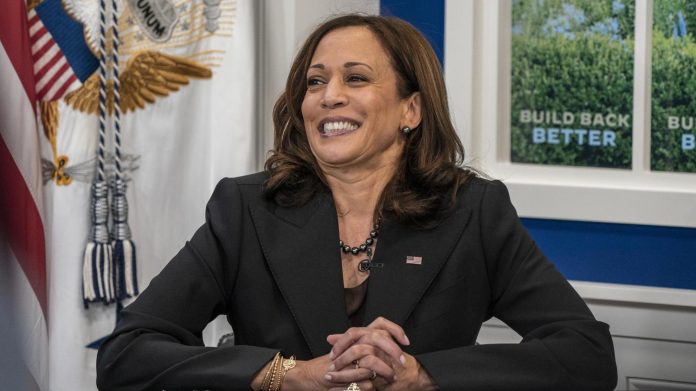People of a certain age might recall the 1970s TV action series “The Six Million Dollar Man.” The fictional title character, a gravely injured astronaut turned government agent, was rebuilt with new bionic parts (“we can rebuild him…better, stronger, faster,” said the show’s opening) that cost taxpayers $6 million. Fast forward 50 years and there’s a new, far pricier government agent in DC: Kamala Harris, the $21 trillion woman.
That’s the conservatively estimated cost of then-Senator Harris’ “Monthly Economic Crisis Support Act.” With the Biden administration setting a May 11 end date for the COVID-19 public health emergency, we can finally close the books on the remarkable plan Harris introduced in May 2020. She proposed sending Americans “crisis payments” each month that emergency declaration was in effect, plus an extra three months after it expired. The legislation never advanced, but if it had most Americans would have received $2,000 checks each month retroactive to March 2020 and continuing through this coming August.
Up to two parents and three children per household would have been eligible, for a maximum of $10,000 per month or an astonishing $120,000 per year. That’s nearly double the US median household income of $67,521 in 2020. It even exceeds the risible guaranteed annual income of $97,000 recently proposed by the San Francisco Reparations Advisory Committee.
Think finding workers is hard now? Across a span of 42 months, a typical family of four would have received a whopping $336,000 in federal checks—without working a minute. That stunning payday would have been in addition to tens of thousands of dollars in other extraordinary payments made during the pandemic, like $600-per-week unemployment bonuses paid to 29 million when Harris introduced her bill. And as with similar pandemic benefit checks, Harris’ payments would have been ignored when determining eligibility for food stamps and Medicaid, rendering means-testing for those and other anti-poverty programs meaningless. When households can collect as much as $120,000 in annual government income and simultaneously qualify for food stamps and Medicaid, something is seriously wrong.
The payments would have phased out only for high-income households (defined as having an adjusted gross income above $100,000 for singles and $200,000 for those filing jointly, naturally not counting these “crisis payments”). That means the vast majority of Americans would have qualified. There was never an official score, but if one conservatively assumes that 75 percent of 334 million US residents would have been eligible, the cost comes to a staggering $500 billion per month. Multiply by 42 months and voila—$21 trillion, an amazing seven times the $3 trillion March 2020 CARES Act, the most expensive bill ever signed into law.
Harris’ legislation, which would have doubled the federal budget, included no offsetting spending cuts, meaning it would have sent deficits spiraling upward at the bionic pace of $1 trillion every other month. Indeed, under her proposal the current $31 trillion federal debt would have skyrocketed to over $50 trillion, without even considering its effects on inflation and interest rates.
President Biden, who signed the partisan $1.9 trillion American Rescue Plan and proposed his ill-fated $3.5 trillion Build Back Better plan, knows a thing or two about massive spending proposals. But even Biden’s dismal record doesn’t hold a candle to that of Vice President Harris, who as Senator proposed what is likely the most expensive bill ever. As the administration touts their supposed budget reduction bona fides in the coming months, it’s worth recalling that Harris’ proposal would still be sending out $500 billion per month in pandemic benefit checks even now, all added to the debt, and earning her the dubious title of the $21 trillion woman.













